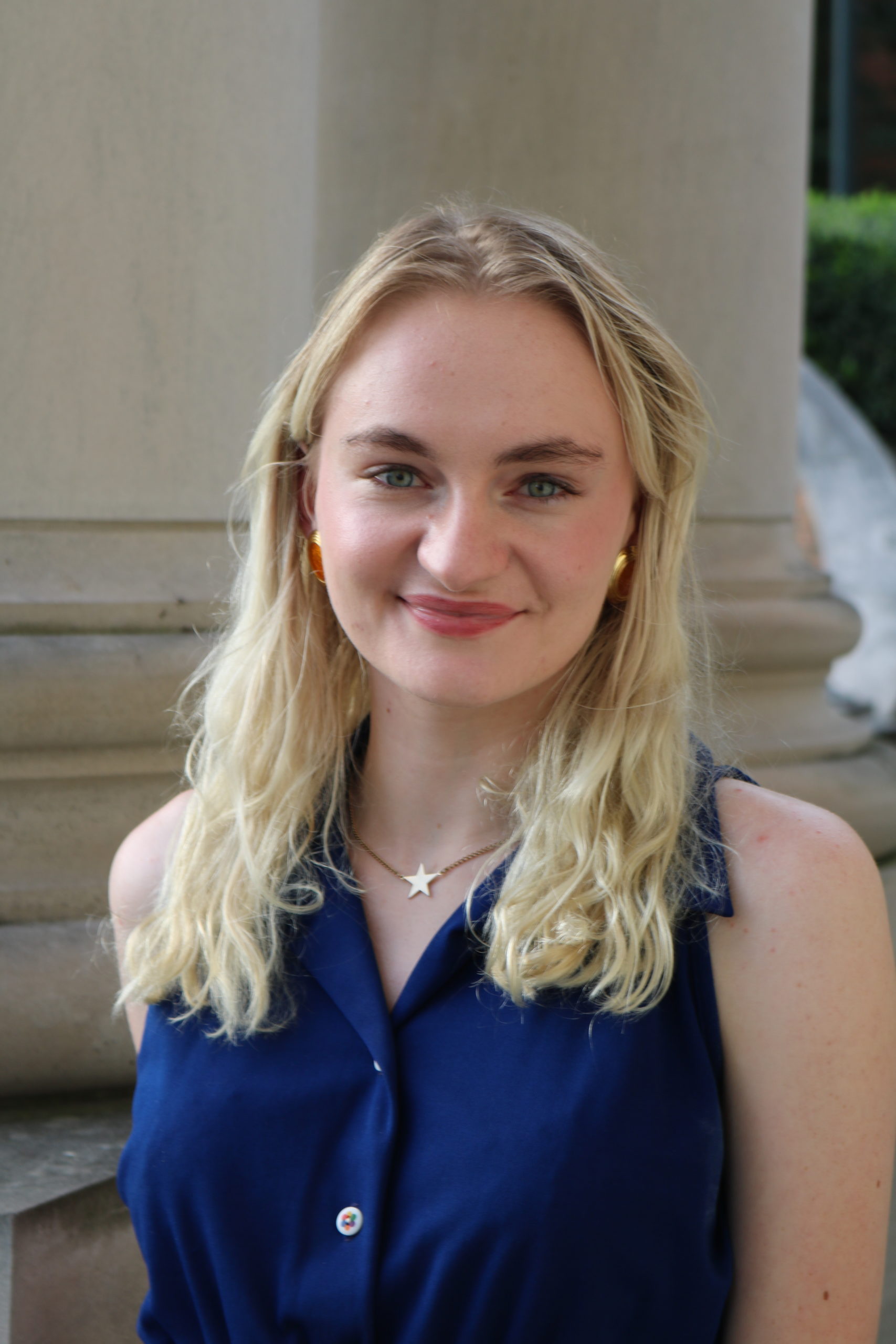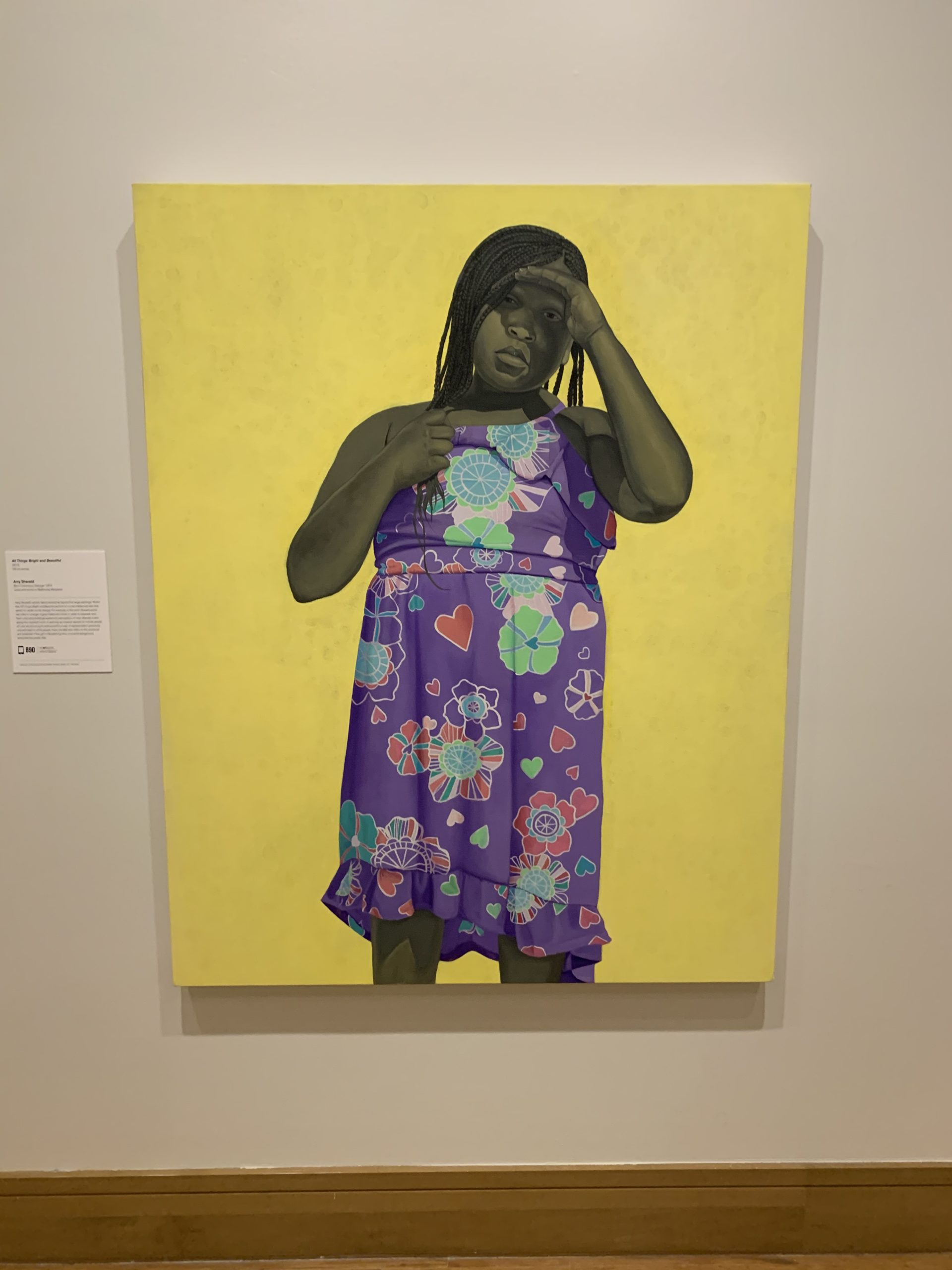In honor of the current exhibition, “All Things Bright and Beautiful,” the Birmingham Museum of Art hosted a virtual webinar discussion with American painter Amy Sherald.
The exhibition is titled after Sherald’s painting featuring a portrait of a little girl named Morgan whom Sherald met while walking her dog. In conversation with Morgan and her mother, Sherald was impressed by the fact that Morgan could read at a college level.
During the webinar discussion, Sherald explained why the portrait was particularly special to her.
“She was just this little girl that was everything I wanted to be as a 30-year-old woman,” Sherald said. “She was just the perfect subject. Her hair, her everything was exactly the way that I could have imagined her.”
Sherald said she almost always finds her models from going out and living her life.
“There’s something to the magic of running into the right person,” Sherald said. “It’s like meeting your soulmate. The story of being in the right place at the right time.”
Over the course of her career, Sherald has carved a place for herself in art history by painting Black subjects in a unique style and setting.
After completing grad school and taking a break from painting to care for sick relatives, Sherald realized that the work she had been making wasn’t sophisticated enough to take her career where she wanted it to go.
“I didn’t get into this just to paint for fun, or just to be a starving artist. I wanted my work on museum walls. I wanted to be a part of art history,” Sherald said.
Sherald spent a year visiting libraries, watching movies, traveling to exhibitions, and spending time in the studio to explore what kind of art she wanted to create. After being inspired by Kara Walker’s exhibition in the Whitney Museum in 2008, Sherald eventually settled on painting Black sitters in the style of American Realism in a way she believed the art world was lacking.
“What I recognized was that I wasn’t seeing work about everyday Black people just being Black. Not doing anything, not teaching you anything, not making any references about the past or our current struggles, but just in leisure,” Sherald said. “I could make art that art history cannot be written without because these images have never been written into history in the first place.”
An aspect of Sherald’s portraits that sets her work apart is her style of neutral skin tones.
Sherald said that she had never been inclined to paint in real life flesh tones, and that as her work has evolved, the style has revealed a deeper meaning.
“In the beginning, it was aesthetic,” Sherald said. “But then, as I got into the second or third painting, I realized not only that it looks really good, but it also speaks to something that I’m trying to say which is really dealing with the interiority of black people, and not this kind of public identity that we have that we all tend to connect ourselves to.”
Sherald’s unique approach and driving mission led to likely her most famous commission: to paint the official portrait of the former First Lady Michelle Obama for the Smithsonian National Portrait Gallery.
After going to the White House and interviewing in the Oval Office, Sherald received the presidential commission. She said the first thing that she did upon hearing the news was go online and look at all of the pictures of Obama to analyze the way her public self was presented.
“I knew that I wanted to capture something that was more private and something that felt more personal,” Sherald said. “That was a private moment that was shared between us that I was able to put into a visual image and give to the public.”
The process started with Sherald exchanging text messages with Obama’s stylist to find the perfect dress. The first lady’s only caveat was that she didn’t want it to be too formal, but otherwise gave Sherald complete artistic freedom. Sherald detailed the process of narrowing down the selection to the final dress.
“When I saw the one [she was eventually painted in] it immediately made me think of the Gee’s Bend Quilters, and I realized that it was a way to connect her to Black history without being too didactic and pay homage to the women that came before her. That’s the one that we ended up going with,” Sherald said.
After choosing an outdoor location in D.C., Sherald was given an hour and a half to photograph Obama. She was concerned about how the first lady’s body language would be interpreted, but after careful tweaking, Sherald got the photo she wanted.
Sherald discussed the toll that painting the official portrait took on her.
“It’s pretty scary putting an image out there like that because there are so many people that are emotionally invested in it,” Sherald said. “The pressure of creating something like that is pretty intense.”
Despite the painting’s success, Sherald was eager to continue with her next project.
“This painting isn’t going to translate into a career. I think that’s one thing that people take for granted,” Sherald said. “I worked hard to get here, and I did this painting, but this painting is not going to carry me for the rest of my life. My work carries me.”
Sherald’s painting “All Things Bright and Beautiful” is currently on display at the Birmingham Museum of Art until March of 2021. More information about the exhibition is available on the Birmingham Museum of Art’s website.

Editor-in-Chief






